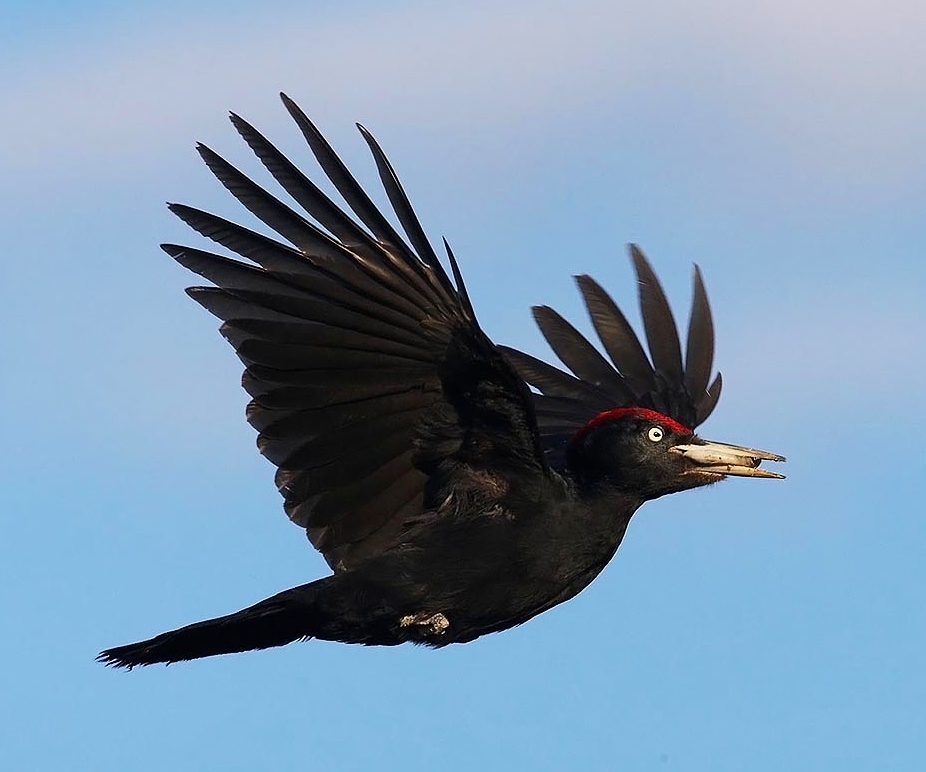 |
| Photo by Jari Peltomaki (Luonto Portti) |
Common name:
black woodpecker (en); pica-pau-preto (pt); pic noir (fr); pito negro (es); schwarzspecht (de)
Taxonomy:
Order Piciformes
Family Picidae
Range:
This species is widely distributed in Eurasia, from the northern Iberian Peninsula to central China and north to northern Scandinavia and north-eastern Russia.
Size:
These large woodpeckers are 45-55 cm long and have a wingspan of 64-73 cm. They weigh 250-370 g.
Habitat:
The black woodpecker is found in temperate and boreal forests, and to a lesser extent in tropical dry forests. They are most common in mountanous areas, but occur at altitudes of 100-2.400 m.
Diet:
They are insectivorous, eating various insects and their larvae, particularly carpenter ants and other wood-boring insects.
Breeding:
Black woodpeckers breed in April-July. They nest on a deep which they excavate into the trunk of a tree, usually 5-20 m above the ground. There the female lays 2-6 shiny white eggs, which are incubated by both parents for about 13 days. The chicks are fed ants and at larvae by both parents and fledge 25-31 days after hatching, remaining with the parents for at least 1 more week after fledging.
Conservation:
IUCN status – LC (Least Concern)
This species has an extremely large breeding range and the global population has been roughly estimated at 4,5-16,8 million individuals. The black woodpecker has expanded its range in western Europe, central Europe and Japan, and the population in Europe has undergone a moderate increase in the last 3 decades.







